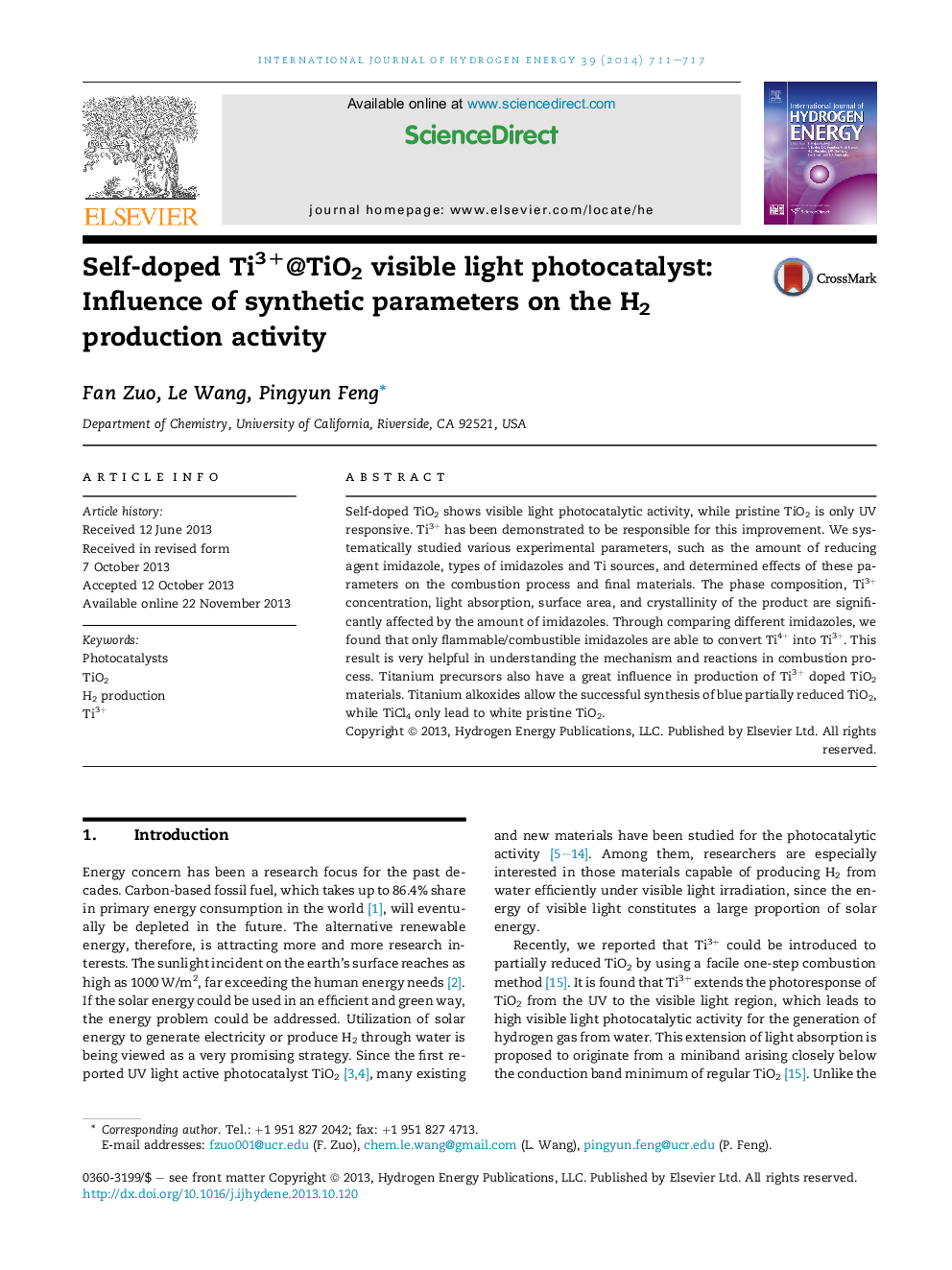| Article ID | Journal | Published Year | Pages | File Type |
|---|---|---|---|---|
| 1276514 | International Journal of Hydrogen Energy | 2014 | 7 Pages |
•Quantitatively characterization of Ti3+ concentration was achieved.•Fine-tuning of Ti3+ doping level and phase composition succeeded.•Effect of Ti3+ concentration on photocatalytic activity was studied and explained.•Crucial steps in combustion process were proposed and confirmed by experiments.
Self-doped TiO2 shows visible light photocatalytic activity, while pristine TiO2 is only UV responsive. Ti3+ has been demonstrated to be responsible for this improvement. We systematically studied various experimental parameters, such as the amount of reducing agent imidazole, types of imidazoles and Ti sources, and determined effects of these parameters on the combustion process and final materials. The phase composition, Ti3+ concentration, light absorption, surface area, and crystallinity of the product are significantly affected by the amount of imidazoles. Through comparing different imidazoles, we found that only flammable/combustible imidazoles are able to convert Ti4+ into Ti3+. This result is very helpful in understanding the mechanism and reactions in combustion process. Titanium precursors also have a great influence in production of Ti3+ doped TiO2 materials. Titanium alkoxides allow the successful synthesis of blue partially reduced TiO2, while TiCl4 only lead to white pristine TiO2.
Graphical abstractFigure optionsDownload full-size imageDownload as PowerPoint slide
